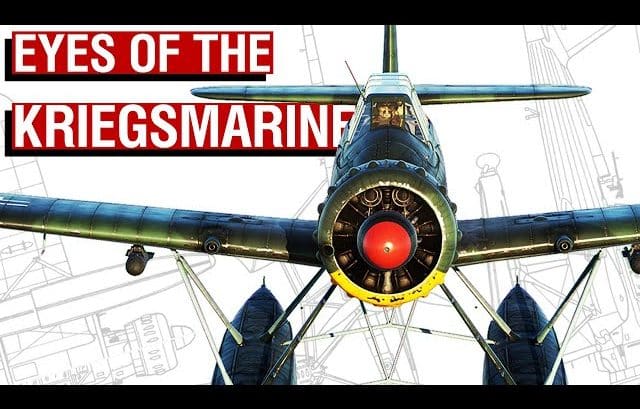As a naval reconnaissance plane, the Arado is often overshadowed by more aggressive planes that fought numerous aerial battles during WWII.
However, it still fulfilled an important role, even coming to be known as the “eyes of the Kriegsmarine.”
Design Origins
The Ar 196 was designed to replace the now obsolete Ar 95. With a new German request for a new shipboard catapult-launched reconnaissance floatplane, Arado’s design was chosen with the development starting in 197.
Ar 196 Development
The development produced four prototypes, and the chosen design was designated as the Ar 196 A. The aircraft was 11 meters in length, 12.4 meters in span, and 4.45 meters in height.
Its wings, foldable at the base, allowed the aircraft to significantly decrease its required hangar space which is a big advantage.
A-5 Model
The A-5 model, being the final production model from 143, was fitted with MF FFM cannon with extended magazines, additional armor plating for the crew, and an upgraded BMW 132W engine. Moreover, MG 81Z defensive machine guns were retrofitted to many existing 196 models to enhance their defensive firepower.
WWII
Notable encounters during the Second World War involved the 196 taking in British submarine with the capture of HMS Seal in May 1940, and the sinking of HMS Shark in July.
One-Sided Fight
On August 15, 1940, the 196 would have its most famous combat experience of the war, wherein a single Ar 196 was bounced by no less than 10 Spitfires. The German seaplane shot one Spitfire down and severely damaged another before going down, the pilot survived the crash.
This is a prime example of the Ar 196s’ uncanny ability to fight far beyond its weight class, especially in the hands of a competent pilot. This is thanks to the plane’s relatively heavy armament which included 20 mm cannons, something not often found in planes of this type.
Best Combat Floatplane
The 196 was the last combat floatplane built in Europe. While it eventually became obsolete at the end of WWII, the 196 served Germany well in all theaters of operation.



